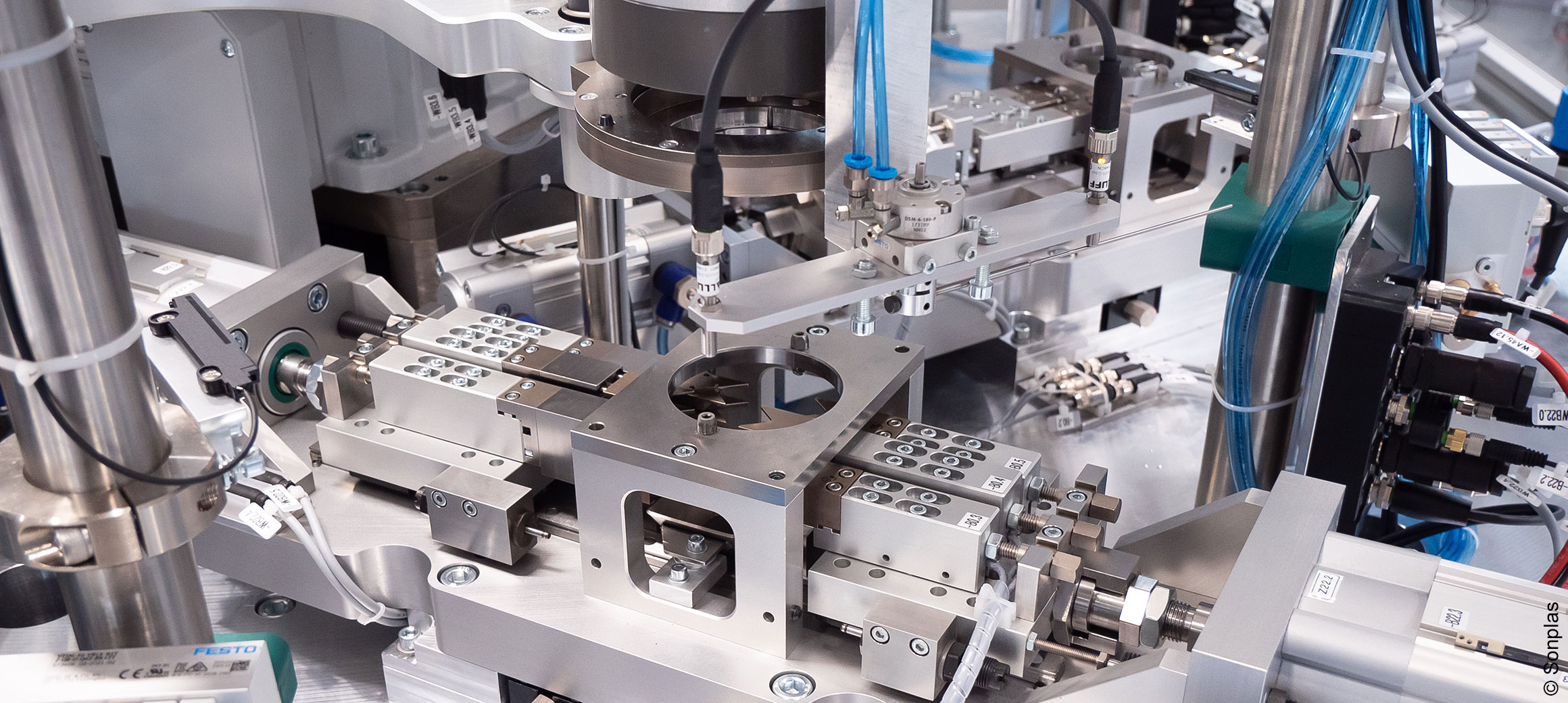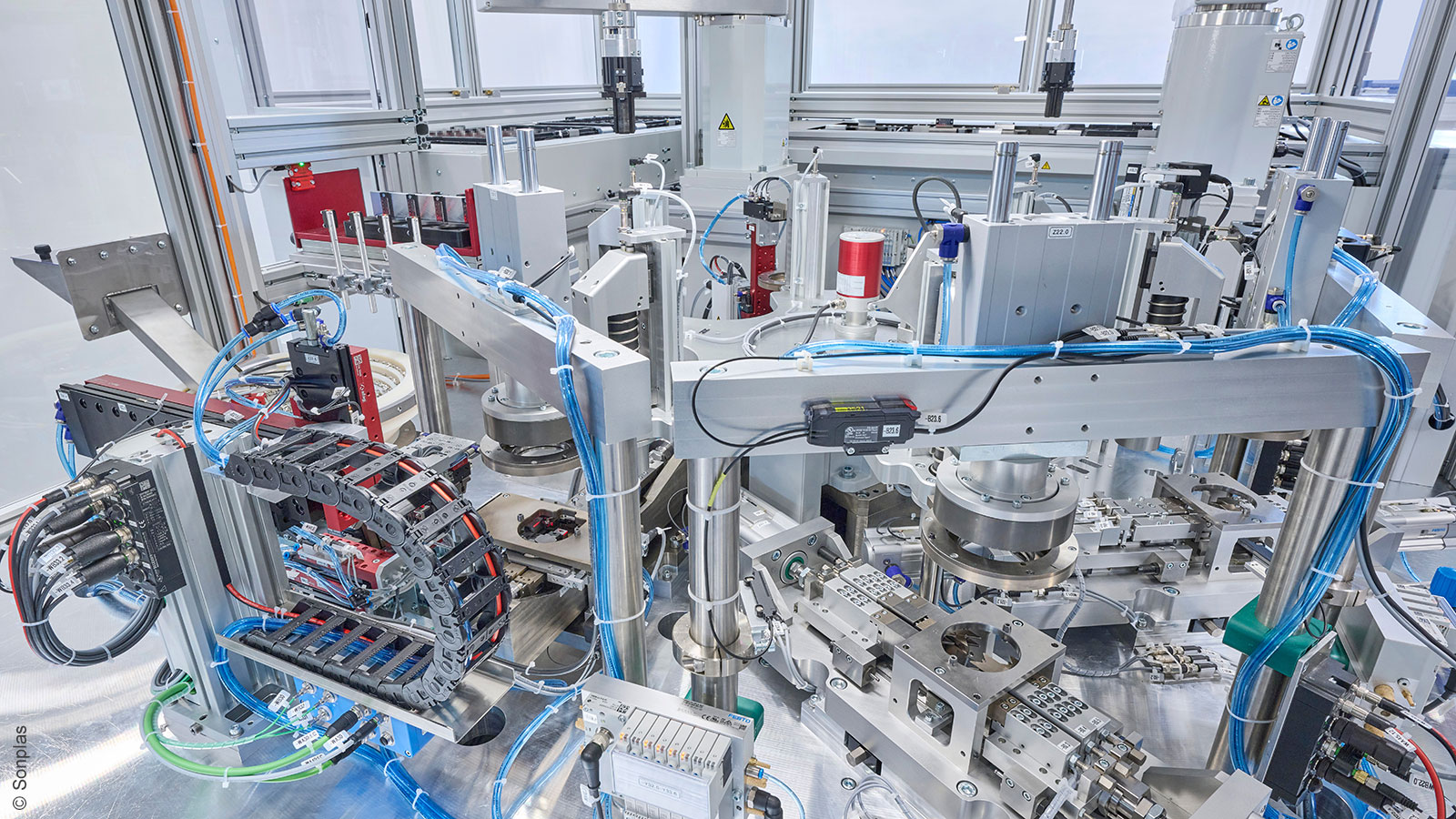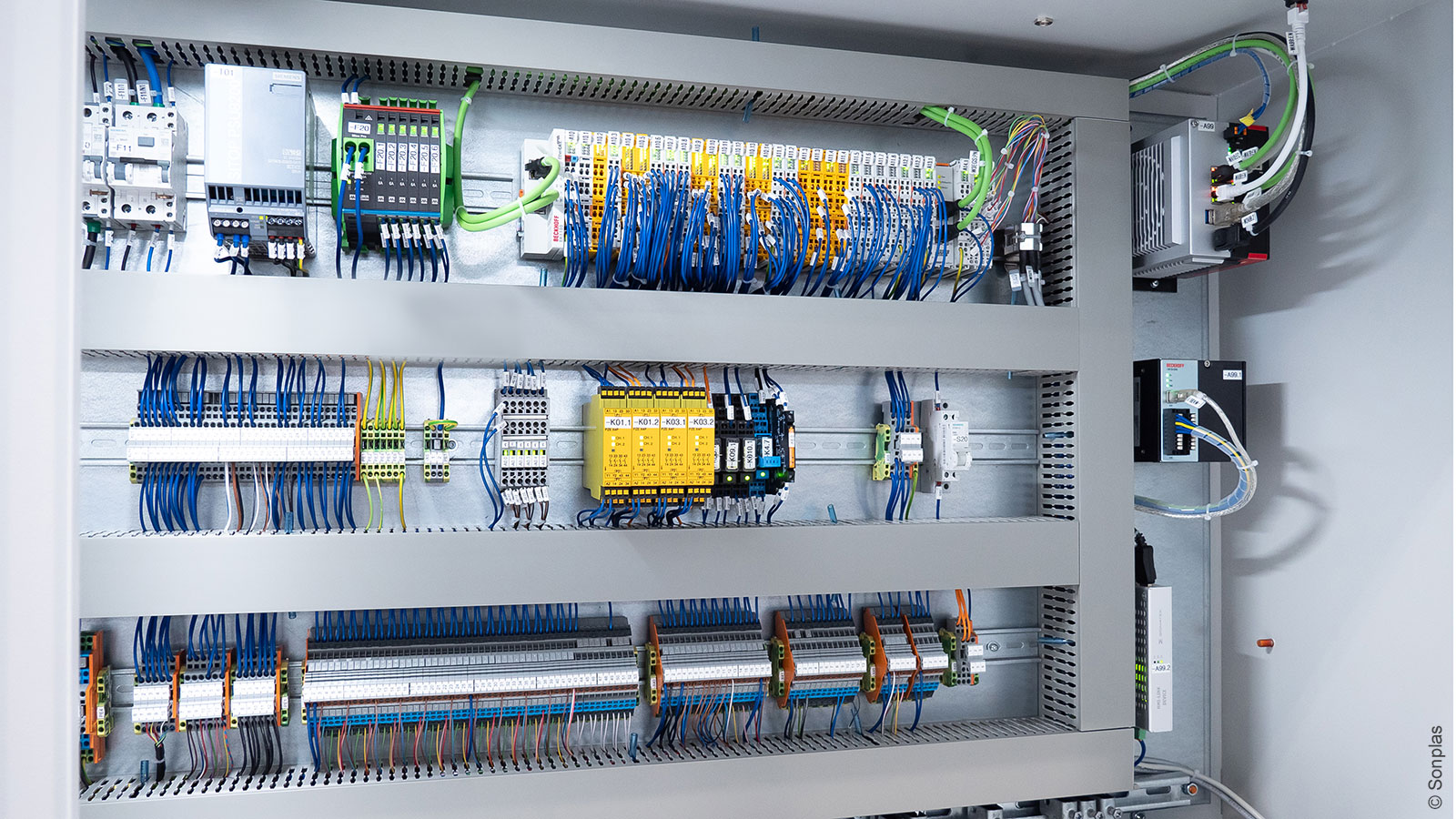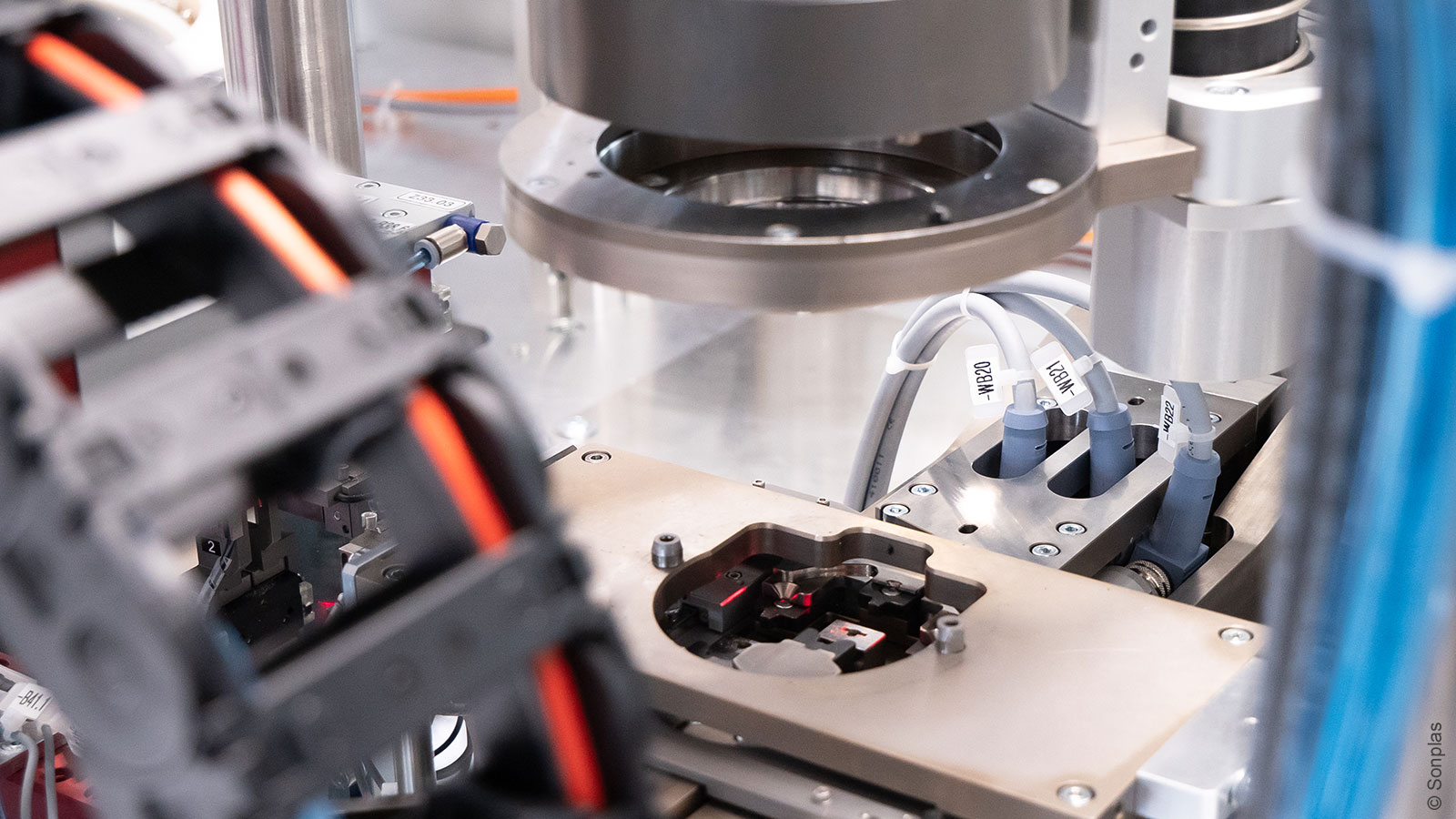

PC-based control optimizes the assembly of electric motors for the automotive industry
As new trends in mobility continue to emerge, the special machine manufacturer Sonplas is one of many companies that has been sharpening its focus on projects from the field of e-mobility in recent years. The company’s areas of activity include developing machines for rotor and stator assembly of electric motors. When it comes to the pre-assembly of stators, Sonplas relies on PC-based control from Beckhoff and benefits from the short cycle times of TwinCAT for maximum output and efficiency.
Based in the Lower Bavarian city of Staubring, Sonplas GmbH develops special machines for customers in the automotive and commercial vehicle industries. The company’s portfolio ranges from test benches and end-of-line testing, through customized machining and assembly machines, right up to fully automated assembly lines. Ever since it was founded back in 1993, Sonplas has never stopped expanding its product range: after originally focusing on supplying machines for fuel injection systems, its main priorities today are e-mobility and power electronics along with battery cell and hydrogen technology. “As an innovative company, it is important for us to address future-oriented topics and apply our process expertise profitably in these areas,” explains Florian Klimmer, Sales Engineer at Sonplas.

High speed of TwinCAT and EtherCAT crucial
Sonplas has been developing assembly systems for the rotor and stator production of electric motors since 2014, and now finds itself faced with new challenges: “E-mobility is a very dynamic field. We have to adjust to the fact that products have shorter runtimes, which means that our machines have to be correspondingly modular and flexible,” explains Florian Klimmer. Shorter cycle times are also playing an increasingly important role, and this is accompanied by high demands on control technology in terms of speed and flexibility. This is precisely why Sonplas relies on PC-based control from Beckhoff when it comes to the pre-assembly of stators. The machine is completely controlled with TwinCAT 3, and the various process steps are implemented on a rotary indexing table: wires for the stator are pre-positioned and cut after winding, a cable lug is attached and crimped, and finally, the wires are prepared for the next processing step in the assembly line. This involves the assembly of stators for an electric motor, which can be installed in electric auxiliary units, for example.
According to Martin Amann, Head of Software Development at Sonplas, the main reason for using PC-based control is the high speed of the Beckhoff technology: “The cycle time of our assembly machine is 5.5 seconds. Taking away the positioning time of the rotary indexing table leaves us with a processing time of 4.5 seconds in which various processes have to run. This means we need very fast PLC cycle times of one millisecond.” The sensor technology and actuators are controlled entirely with TwinCAT – even the safety technology is integrated via TwinSAFE. In combination with the high-speed EtherCAT fieldbus, this facilitates optimum synchronization.
The control platform is a C6032 ultra-compact Industrial PC, which combines high performance and a small form factor. At field level, EtherCAT Box modules from the EPP series are also used, which can be mounted directly on the machine. The installation and wiring effort is reduced thanks to the integration via the EtherCAT P one cable solution. “This also allows the high speed of EtherCAT to be transported directly to the sensor. When you are working with oversampling, this makes it possible to achieve a high sampling rate,” notes Martin Amann, describing the advantages for Sonplas. Drive technology tasks are carried out with the EL72xx servomotor Terminals, among others, which feature a compact design that saves space in the control cabinet. The control for the assembly machine was programmed entirely in TwinCAT 3, with Sonplas relying on a high degree of automation for PLC code generation: using a tool chain created in-house, data from the electrical design is loaded directly into a corresponding framework with the help of the Automation Interface to generate a machine-specific TwinCAT project.
PC-based control as a central control platform
Sonplas has long relied on PC-based control technology from Beckhoff, and also benefits from the central control platform for the pre-assembly of stators: “PC-based control makes it possible for all machine functions to run synchronously on a PC. It even integrates databases and vision systems. We don’t need any subsystems for outsourcing measurement technology, analysis, or end-of-line testing; everything runs on a single control with a single engineering tool,” enthuses Florian Klimmer, summarizing the advantages. “In addition to the integration of all functions on a single platform, the high speed of TwinCAT and EtherCAT was particularly crucial for this application.”

